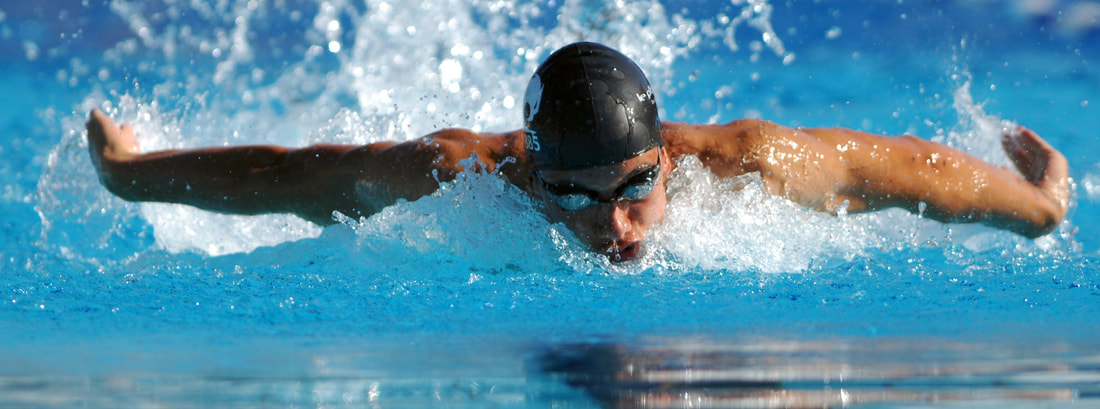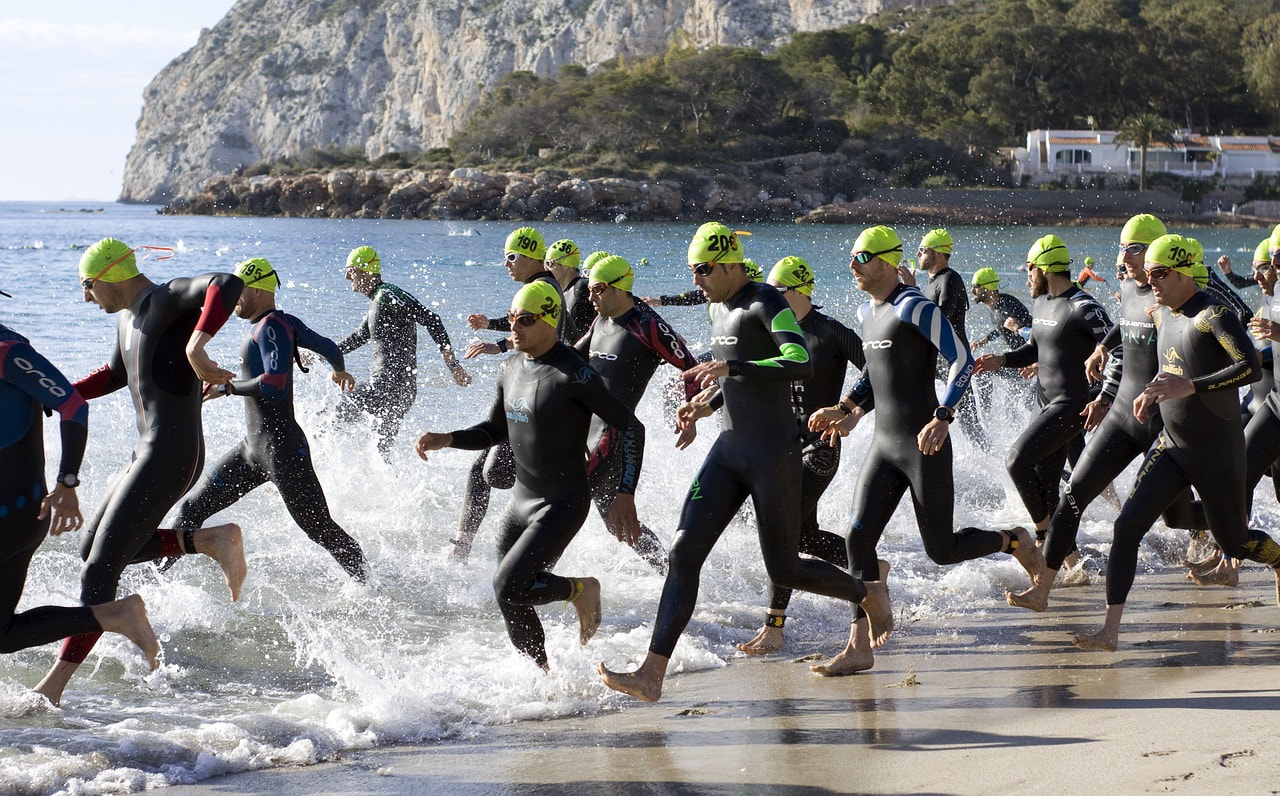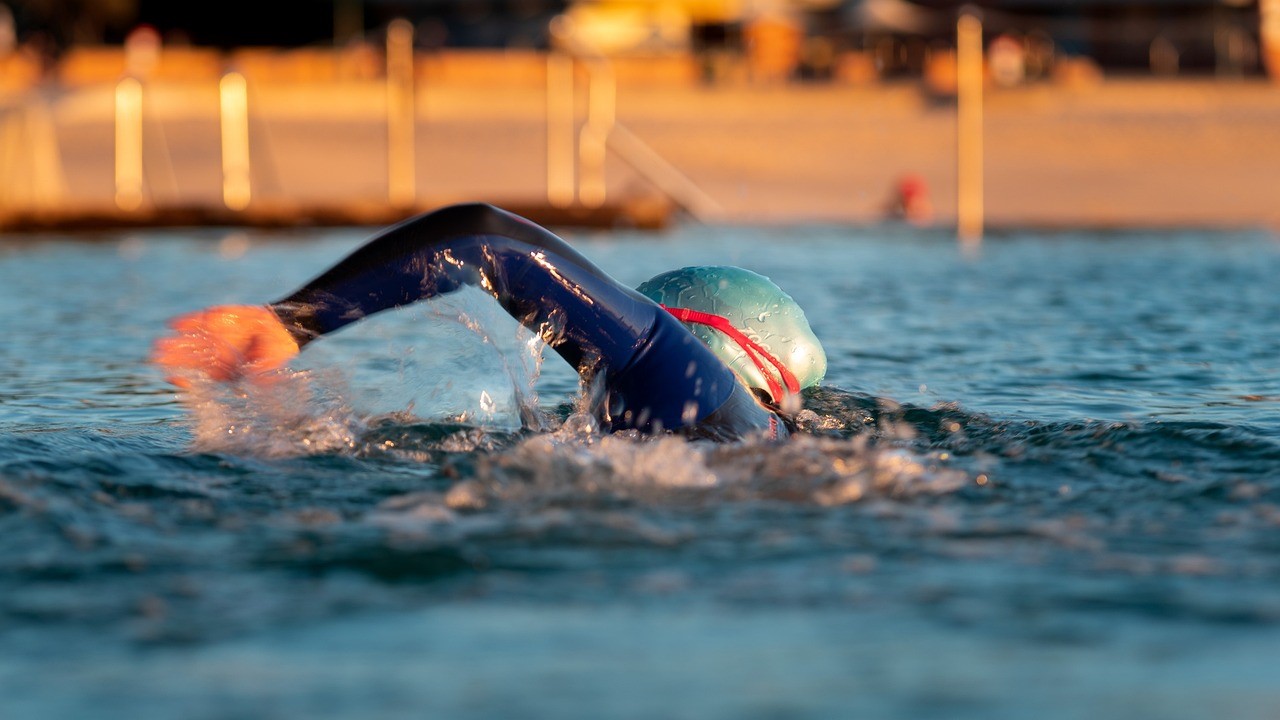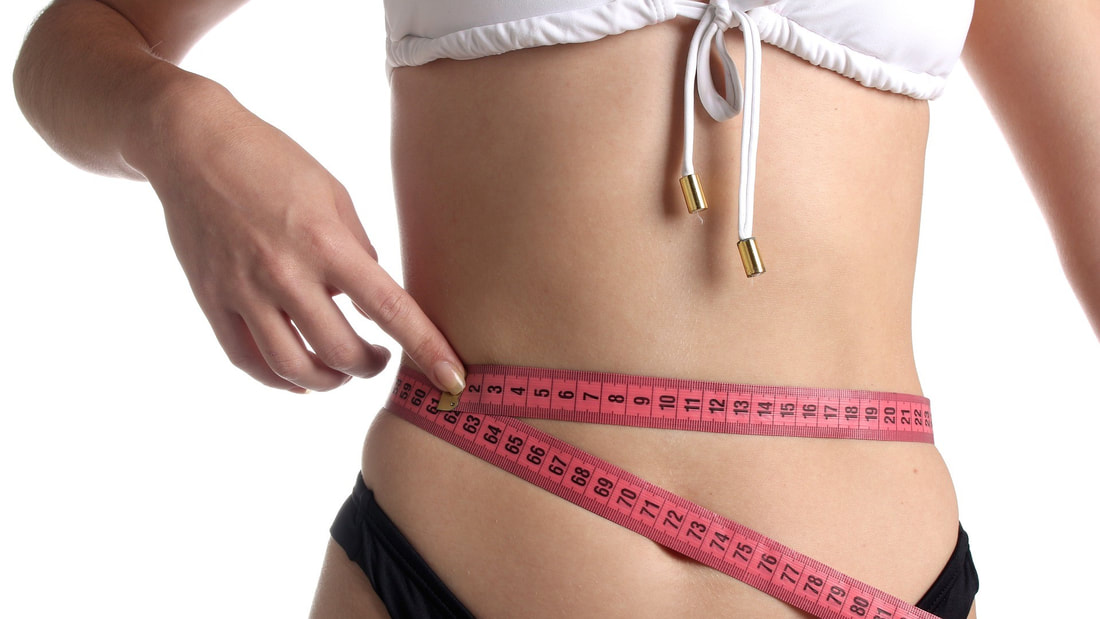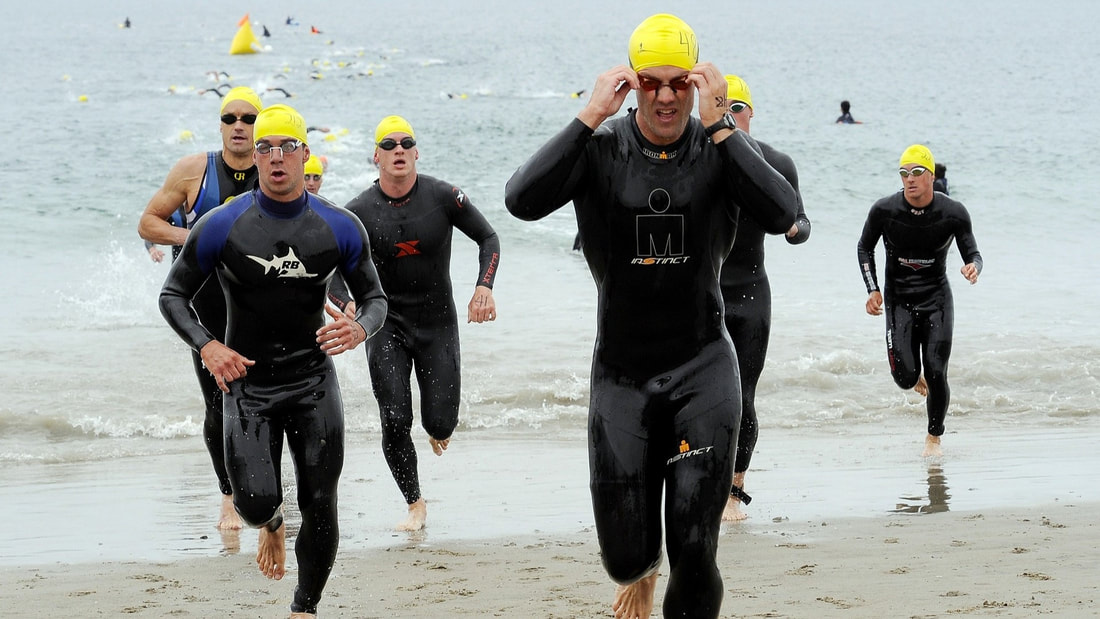|
High-Intensity Interval Training (HIIT) has revolutionized the world of fitness, offering efficient and effective workouts that produce impressive results in very little time. When applied to swim training, HIIT can significantly enhance performance, whether you're a competitive triathlete or a recreational swimmer looking to improve speed and efficiency. It is necessary to dive into the principles of HIIT, explore its benefits for swimmers, and provide practical strategies for integrating HIIT into your swim training routines. Understanding HIIT: HIIT involves alternating between short bursts of high-intensity exercise and brief periods of rest or low-intensity exercise. This approach challenges the cardiovascular system, boosts metabolism, and promotes fat loss while preserving muscle mass. HIIT workouts are characterized by their intensity, often pushing swimmers to near-maximal effort during the work intervals. Benefits of HIIT for Swimmers and triathletes:
Implementing HIIT in Swim Training:
Sample HIIT Swim Workouts: 1. Sprint Intervals:
2. Tabata Protocol:
3. Pyramid Set:
4. Distance HIIT:
5. Stroke-Specific Intervals: - 6 x 75 meters backstroke @ max effort, with 30 seconds rest between intervals - 8 x 50 meters breaststroke @ high intensity, with 20 seconds rest between intervals Conclusion: High-Intensity Interval Training (HIIT) offers a potent and efficient approach to swim training, with numerous benefits for swimmers of all levels. By incorporating HIIT into your training regimen, you can enhance cardiovascular fitness, boost anaerobic capacity, and improve overall performance in the water. With proper planning, execution, and progressive overload, HIIT can be a valuable tool for achieving your swimming goals and reaching new heights of athletic success. So dive in, embrace the intensity, and unleash your full potential with HIIT swim training. Please talk to your Strictly Swimming London coach about implementing HIIT into your lessons. As you dive into the world of triathlon training, a common question often arises: when it comes to training for the swim leg, what matters more—being fast or having stamina? It's a crucial element to figure out as you aim for your best performance. Striking the right balance between quick strokes for speed and a steady pace for endurance becomes super important in chasing that ultimate triathlon performance. Finding your balance between speed and endurance will make a big difference in how you approach your swim training strategy. Why not tailor your Strictly Swimming London lessons in developing your training on these two elements! The importance of Speed in your swim stroke Speed as a Competitive Edge In competitive triathlon, the importance of speed cannot be understated. A faster swim leg allows athletes to establish an early lead against competitors, setting a positive feeling for the entire race. Speed can be a valuable asset when navigating crowded open water starts, enabling triathletes to find clear paths in the water and avoid congestion. Faster Stroke Rate Required In choppy open water conditions, a faster stroke rate becomes crucial for swimmers seeking to navigate efficiently and maintain momentum. A fast stroke rate in swimming generally refers to the number of strokes a swimmer takes per minute. A higher stroke rate allows swimmers to adapt to the unpredictable nature of choppy waves, reducing the chances of being thrown off course or encountering resistance. The rapid arm turnover facilitates quicker adjustments to the changing water surface, enabling swimmers to maintain a smoother and more streamlined progression through turbulent conditions. Additionally, a faster stroke rate can enhance buoyancy and help swimmers stay afloat amongst choppy waves, contributing to overall safety and performance in challenging open water environments. Training for this will give you the edge over the rest of the field. Energy Conservation Surprisingly, speed can also contribute to energy conservation in the swimming leg of triathlon. Efficient and well-executed swim strokes can reduce the overall time spent in the water, potentially conserving energy for the demanding cycling and running legs that follow. This efficiency becomes less crucial in longer-distance triathlons where pacing is vital. Mental Advantage The psychological impact of maintaining a quick pace should not be underestimated. A strong start with swift strokes can instil confidence, positively influencing your mindset throughout your race. The mental strength developed through speed-focused training can create good resilience in the water during challenging moments of a triathlon. The importance of Endurance in your swim stroke Triathlon Endurance Requirement Triathlon, by its very nature, demands endurance. Completing a long-distance race involves pushing through fatigue in the later stages, making endurance a foundation of success. In the swim leg, endurance allows swimmers to maintain a steady pace, preventing burnout and ensuring energy reserves for the remaining disciplines. Building an Endurance Foundation Endurance training is not just about clocking up more miles in the pool but also about building a solid foundation of cardiovascular fitness. A well-conditioned cardiovascular system contributes to efficient oxygen utilization, delaying the onset of fatigue and enhancing overall race performance. Preventing Risks of Overtraining Emphasizing endurance in training can alleviate the risks of overtraining and injuries. Gradual and consistent increases in swim distances build resilience, reducing the likelihood of burnout or injury caused by overly aggressive speed-focused training. Striking the Balance between Speed and Endurance in Triathlon Swim Training The Middle Ground: Finding Optimal Speed and Endurance While the debate often frames speed and endurance as opposing forces, the reality lies in finding a appropriate balance. The ideal triathlon swim training program incorporates elements of both speed and endurance, recognizing that one complements the other. People often argue about whether speed and endurance in triathlon swimming are at odds, but the truth is, it's all about finding the right balance. The best training programs for the triathlon swim leg combines both speed and endurance, understanding that they actually work well together. Periodisation: Integrating both Speed and Endurance Cycles Adopting a periodization approach allows athletes to switch between speed and then endurance-focused phases seperately. This strategic variation in training prevents monotony, promotes adaptation, and ultimately enhances both elements. Our Strictly Swimming London coaches are here to educate you on training cycles and periodisation and offer training ideas. Technical Efficiency Improving your swimming technique is like building a bridge between going fast and lasting longer in the water. As a swimmer, when you develop good efficient technique, you will use less energy, which means you will be able to keep up a steady pace for a longer time. Doing drills, taking lessons, and getting coaching that focuses on technique can make a big difference in finding that sweet spot between speed and endurance. Conclusion In triathlon swim training, it's not a simple choice between speed and endurance – both are crucial. Successful triathletes know that they need a mix of both. Speed gives an advantage, but endurance ensures you can keep up a strong performance throughout the whole race. Finding the right balance means using periodization, improving your technique, and understanding that speed and endurance can work together in a training plan. Success comes from managing the relationship between speed and endurance, helping triathletes reach their full potential in the tough swim portion of a triathlon. Please talk to your Strictly Swimming London coach about focusing on both speed and/or endurance during your lessons. Swimming and triathlon are highly demanding sports that requires rigorous training to achieve peak performance. Swimmers and triathletes often push themselves to the limit to improve their speed, endurance, and technique. While intense training is essential for success, there is a fine line between effective training and overtraining. Overtraining in swimming can have detrimental effects on an athlete's physical and mental well-being, as well as their overall performance. Adult Swimmers and Overtraining Adult swimmers, like their younger counterparts, are also susceptible to overtraining due to several factors. These individuals, driven by personal goals, competitive desires, or even the pursuit of fitness, can sometimes push themselves too hard, often without the proper guidance. Adult swimmers may overtrain by increasing training volume or intensity rapidly, as their enthusiasm for improvement can lead to the misconception that more is always better. In many cases, adults juggle demanding work schedules (especially in London), family responsibilities, and other commitments, leaving them with limited time for rest and recovery. This can result in insufficient recuperation between workouts, making them prone to the physical and mental consequences of overtraining. Additionally, adult swimmers may lack the experience or professional guidance required to manage their training loads effectively, ultimately making them vulnerable to the perils of overtraining. Please contact Strictly Swimming London for a lesson if you feel that you are experiencing problems in your training, and we can offer advice. Understanding Overtraining Overtraining, also known as overtraining syndrome (OTS), occurs when an athlete's training intensity and volume exceed their capacity for recovery. It is a complex and multi-layered condition that can affect swimmers of various levels. Understanding the signs and symptoms of overtraining is the first step in preventing it. Signs and Symptoms of Overtraining
Causes of Overtraining Several factors can contribute to overtraining in swimming, and it's often a combination of these factors that lead to the syndrome. Identifying these root causes is essential for prevention and intervention.
Effects of Overtraining Overtraining can have severe and far-reaching effects on both an athlete's physical and mental well-being. These effects can not only hinder performance but also pose risks to an athlete's overall health. 1. Physical Effects
2. Mental and Emotional Effects
Prevention of Overtraining Preventing overtraining is paramount to an athlete's long-term success and well-being. Implementing these preventive measures can help maintain a healthy balance between training and recovery.
Recovery Strategies If an athlete is already in the grips of overtraining, it is crucial to implement recovery strategies to alleviate symptoms and return to a healthy state.
At Strictly Swimming London lessons, we can create a lesson to reintroduce you back into the pool after overtraining, we can advise you in your lessons on overtraining if you have been suffering from many of the above problems and we can look at a training programmes with the focus on preventing overtraining. In the world of fitness, swimming often takes a backseat to other forms of exercise like running or weightlifting when it comes to burning fat. However, this aquatic exercise offers a multitude of benefits that make it a powerful contender in the fight against fat accumulation. The science behind swimming shows how this form of exercise helps burn fat, metabolizes fat, and such science has paved the way to show the best forms of swim training to maximize fat-burning potential.
Swimming is not just a refreshing recreational activity but also a powerful tool for fat burning and overall fitness. As a full-body workout, it engages multiple muscle groups, elevates the heart rate, and incinerates calories effectively. Whether you're a beginner taking lessons or a competitive triathlete, understanding the interaction between swimming and fat burning can propel you toward a healthier, leaner physique. Your Strictly Swimming London coach can help you achieve that slender body. Understanding Fat Burning and Metabolism Before delving into the specifics of how swimming aids in fat burning, it's useful to grasp the basic concepts of fat metabolism. The body primarily relies on two sources of energy: carbohydrates and fats. During moderate-intensity activities, the body initially uses carbohydrates for energy due to their quick availability. However, as the intensity and duration of exercise increase, the body gradually shifts to using fats as the primary energy source. Lipolysis: This process involves the breakdown of triglycerides (the storage form of fats) into fatty acids and glycerol. These fatty acids are then released into the bloodstream to be utilized as fuel by various tissues, including muscles, during exercise. Beta-Oxidation: Once in the muscles, fatty acids undergo beta-oxidation, a metabolic pathway that breaks down these fatty acids further to produce adenosine triphosphate (ATP), the body's primary energy currency. EPOC (Excess Post-Exercise Oxygen Consumption): After exercise, the body's oxygen consumption remains elevated as it works to restore various physiological processes to their pre-exercise states. This phase requires energy, and a significant portion of this energy comes from fat oxidation. Swimming significantly influences metabolism by increasing the body's energy expenditure. As you swim, your muscles work harder against water resistance, prompting a higher metabolic rate. This, in turn, enhances fat metabolism as the body utilizes stored fats for energy, contributing to weight loss and improved overall metabolic health over time. Additionally, the post-swim period involves an elevated metabolic rate as the body works to recover, repair tissues, and restore balance, further enhancing the long-term benefits of swimming on metabolism. Swimming and Fat Burning Swimming, being a full-body workout, engages multiple muscle groups simultaneously. The water's resistance amplifies the effort required, making swimming an excellent aerobic exercise. This resistance helps build muscle strength, enhances cardiovascular conditioning, and amplifies the overall calorie burn during a swim, making it an efficient and effective fat-burning exercise. Let's explore how swimming facilitates fat burning:
Adults tend to burn more fat when swimming due to their higher muscle mass compared to children or adolescents. Muscle tissue requires more energy, and as adults engage a larger proportion of their muscle mass during swimming, it results in increased fat oxidation to meet the heightened energy demand. Additionally, adults typically engage in longer and more sustained swimming sessions, allowing them to tap into fat stores for a more extended duration, further facilitating fat loss. Triathletes often excel at burning fat during swimming due to their rigorous training routines. Their high level of cardiovascular fitness enables them to sustain longer and more intense swimming sessions, promoting fat oxidation as a primary energy source. Moreover, the cross-training nature of triathlons ensures that these athletes engage in various workouts, including swimming, which enhances their overall metabolic efficiency, aiding in fat burning throughout the entire race. Optimizing Swimming Training for Fat Burning While swimming inherently offers fat-burning benefits, structuring your training routine or lessons effectively can maximize its potential. Here are some strategies to consider:
Conclusion Swimming is a versatile and effective exercise for burning fat and promoting overall fitness. Its ability to engage multiple muscle groups, elevate heart rate, and provide a low-impact workout makes it an attractive option for individuals seeking to shed excess fat. Through processes like lipolysis, beta-oxidation, and EPOC, swimming kick starts the body's mechanisms to utilize stored fat as a source of energy. By structuring your swimming training to include interval training, endurance sessions, variety, and consistency, you can unlock its full potential for fat burning. So, the next time you dive into the pool or take your lessons, know that you're not only enjoying the water but also engaging in a powerful fat-burning workout that benefits both body and mind. At Strictly Swimming London, we can incorporate or even totally focus on fat burning workouts during your lessons. In the world of sport and fitness, swimming, running, and cycling are three of the most popular cardiovascular exercises. Each activity has its own set of benefits and appeals to different individuals based on their goals, preferences, and physical conditions. All three sports can help you become healthier and fitter, however amongst these disciplines, swimming often stands out as the ultimate winner. It not only improves your heart and lung health but also has some unique benefits that make it different from running and cycling. All three of these activities work your muscles and make your heart stronger, but swimming has a special advantage because of the water's resistance and buoyancy. Swimming is good for your joints, gives your whole body a workout, and can help you relax mentally. These are benefits that running and cycling can offer but not to the same level as swimming. So, if you're looking for a lesson or exercise that's gentle on your joints, gives you a full-body workout, and helps you relax, please contact Strictly Swimming London and book a lesson and let us teach you on why swimming is a great choice for staying healthy. 1. Low-Impact Exercise: One of the standout advantages of swimming is its low-impact nature. When you swim, the buoyancy of the water reduces the stress on your joints, making it an ideal exercise for people of all ages and fitness levels, including those with joint issues or injuries. Running and cycling, while effective forms of exercise, can take a toll on the joints over time due to the repetitive impact. Swimming allows for a challenging cardiovascular workout without the risk of joint strain. Swimming stands out as a remarkably low-impact exercise that brings a wealth of benefits to the body, particularly to the joints and other crucial areas. Unlike high-impact activities such as running or even certain forms of weightlifting, swimming involves moving through water, which provides a cushioning effect that significantly reduces the stress on joints and bones. The buoyant nature of water is a key factor that contributes to the low-impact nature of swimming. When you're submerged in water, your body weight is supported, leading to decreased pressure on joints like the knees, hips, and ankles. This buoyancy not only lessens the risk of impact-related injuries but also allows individuals with joint conditions or those recovering from injuries to engage in exercise without exacerbating their discomfort. Moreover, swimming's fluid movements work in harmony with the body's natural range of motion. The water's resistance provides a gentle yet effective workout, engaging muscles without straining joints. This makes swimming an ideal choice for people seeking a cardiovascular exercise that enhances muscle strength while minimizing wear and tear on the body's framework. In addition to its joint-friendly attributes, swimming offers an overall workout that promotes balanced muscle development. The various strokes and movements required during swimming engage muscles from head to toe, encouraging overall body strength without placing undue stress on any single area. This comprehensive workout not only helps in muscle toning but also supports joint stability by ensuring that surrounding muscles adequately support them. Many people move from running to triathlon to try and get the balance of low impact sports in their weekly workouts. For those recovering from injuries or individuals with conditions like arthritis, swimming can serve as a valuable rehabilitation tool. The controlled environment of the water allows for gradual progression in intensity and range of motion, enabling individuals to regain strength and mobility while minimizing the risk of setbacks. 2. Full-Body Engagement: Swimming stands out for its ability to engage multiple muscle groups simultaneously. The resistance provided by water forces your body to work against it, resulting in a comprehensive full-body workout. In contrast, running primarily targets the lower body muscles, and cycling focuses predominantly on the legs. Swimming's various strokes, such as freestyle, backstroke, breaststroke, and butterfly, engage the arms, legs, core, and back, leading to balanced muscle development and improved overall strength. Swimming stands as an exceptional workout that engages and develops all major muscle groups in the body. As you glide through the water, the resistance it offers requires your muscles to work against it, leading to a comprehensive full-body workout. Different swimming strokes target specific muscle groups, ensuring a balanced approach to muscle development. Strokes like freestyle involve the arms, shoulders, chest, and back, sculpting the upper body. Breaststroke engages the chest, shoulders, triceps, and thighs. Butterfly challenges the core, back, shoulders, and legs, enhancing both strength and coordination. Backstroke strengthens the upper back, shoulders, and arms. Additionally, the water's resistance aids in toning muscles without placing excess strain on joints. Whether you're an occasional swimmer or a dedicated enthusiast, swimming's ability to target every muscle group makes it a versatile and effective way to achieve a well-rounded and balanced physique. 3. Cardiovascular Fitness: All three activities – swimming, running, and cycling – contribute to cardiovascular fitness by increasing heart rate and improving circulation. However, swimming has a unique advantage when it comes to breath control. Coordinating your breathing with your strokes enhances lung capacity and strengthens the cardiovascular system. This controlled breathing aspect adds an extra layer of benefits to swimming that sets it apart from running and cycling. 4. Calorie Burn and Weight Management: Swimming is a calorie-burning powerhouse. The resistance of the water requires more effort, resulting in higher energy expenditure. Moreover, the body's natural response to the cooling effect of water involves burning extra calories to maintain its core temperature. Running and cycling also burn calories effectively, but swimming's combination of resistance and temperature dynamics provides a distinctive advantage in calorie consumption and weight management. 5. Joint Flexibility and Range of Motion: The fluid movements of swimming promote joint flexibility and a wider range of motion. The stretching and reaching involved in swimming strokes help improve flexibility in the shoulders, hips, and spine. Running and cycling, though beneficial, lack the same level of joint flexibility enhancement due to their repetitive nature. Swimming is particularly valuable for those seeking to maintain or improve joint health while staying active. 6. Low Heat Impact: Swimming offers a refreshing reprieve from high-impact activities in warm weather. The water's cooling effect minimizes the risk of overheating during intense workouts. Running and cycling in hot conditions can lead to heat-related issues, making swimming a safer and more comfortable option when the sun is blazing. 7. Stress Relief and Mental Well-being: While all three activities trigger the release of endorphins – the body's natural "feel-good" chemicals – swimming provides an additional mental health advantage. The sensation of being in water has a calming effect, reducing stress and anxiety levels. The rhythmic and repetitive nature of swimming strokes can induce a meditative state, contributing to enhanced mental well-being and relaxation. 8. Rehabilitation and Injury Prevention: Swimming is often recommended for rehabilitation purposes due to its low-impact nature. It is gentle on injuries and can aid in recovery from conditions such as sprains, strains, and stress fractures. Additionally, swimming helps prevent injuries by strengthening muscles and improving joint stability. Running and cycling, while excellent forms of exercise, can sometimes exacerbate existing injuries or lead to new ones due to their impact on joints. We can tailor your lessons to reduce impact on your joints within your swimming strokes. Conclusion: Swimming, running, and cycling all have their merits and cater to different fitness goals. However, swimming emerges as a clear winner when considering its low-impact benefits, full-body engagement, cardiovascular advantages, joint flexibility improvements, and mental well-being enhancements. While running and cycling have their place in a well-rounded fitness routine, individuals seeking a workout that prioritizes joint health, muscle balance, and mental relaxation will find swimming to be an optimal and rewarding exercise choice. As always, consulting with a healthcare professional before embarking on a new exercise regimen is recommended to ensure it aligns with individual health conditions and goals, and we can monitor your swim Many of our Strictly Swimming London clients entering into our triathlon swim programme and lessons have seen the benefits of swimming on their overall fitness, see please contact us on info@strictly-swimming,com to book a lesson. |
AUTHORPaul started competing in swimming from the age of 8 and eventually went on to represent his country all over the world. During his time at University, Paul specialised in Aquatics and the Biomechanics of Swimming and produced numerous theses on swimming performance. TOPICS
All
ARCHIVES
June 2024
|
Let's connect!
Copyright © 2024 Strictly Swimming


